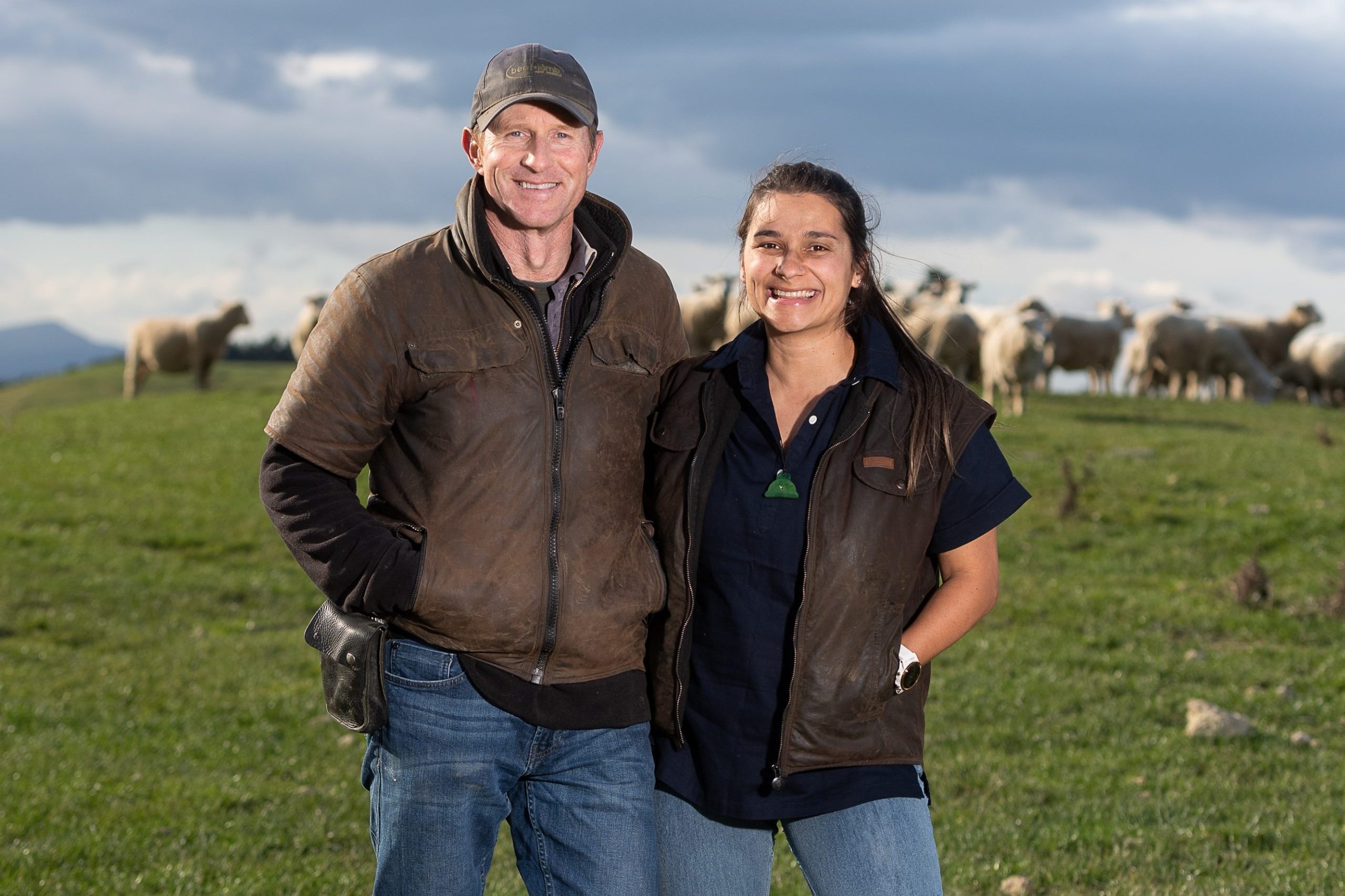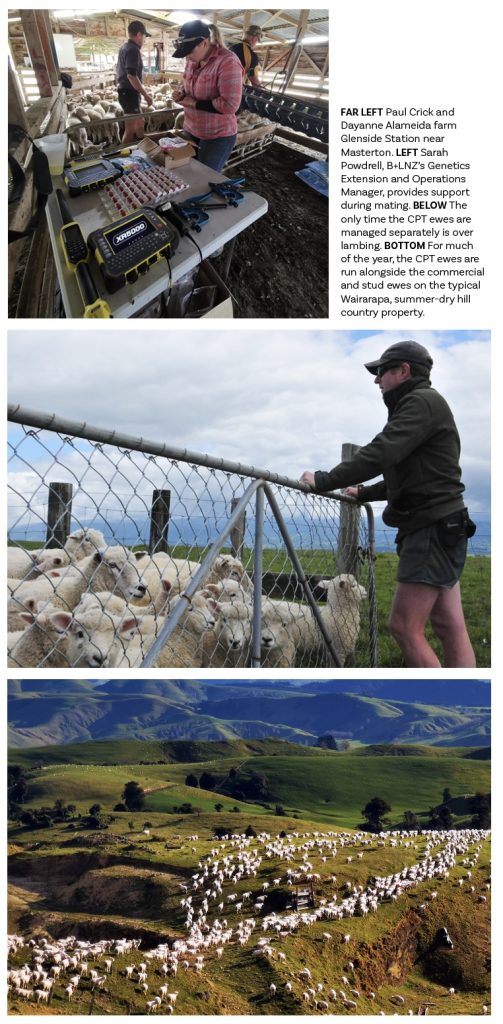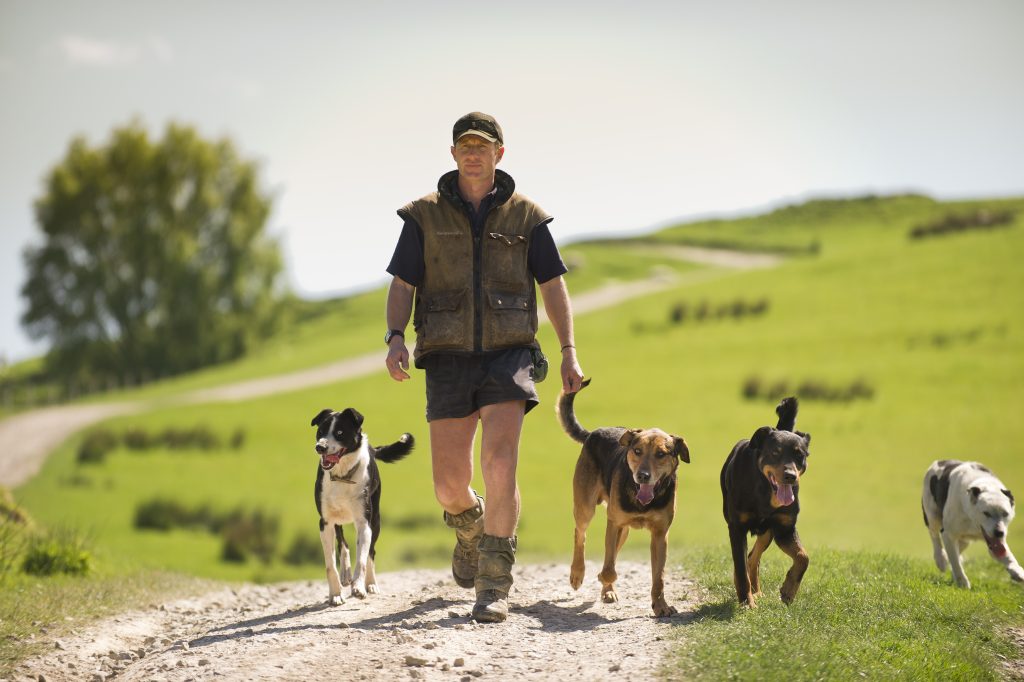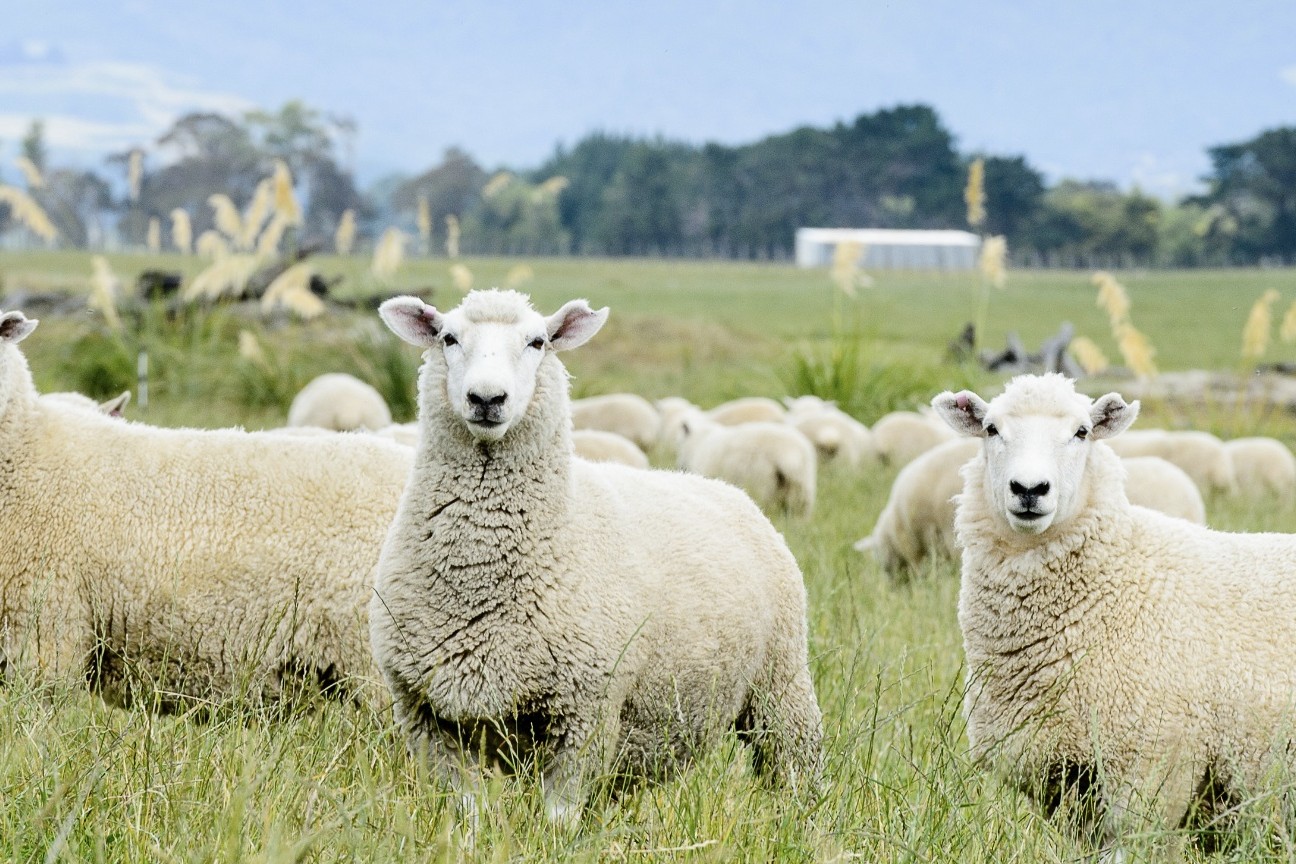Testing genetics in commercial hill country conditions
Understanding what a valuable resource the Central Progeny Test is to the industry, Paul Crick and Dayanne Almeida have been instrumental in the establishment in the first hill country Central Progeny Test flock. Words Sandra Taylor, Photos Arahua

Paul Crick farms with the philosophy that if he looks after the individual, the flock will take care of itself.
It is a philosophy that he and his partner Dayanne Almeida apply to all 5,000 sheep under their management, which include commercial, stud and Central Progeny Test ewes and their progeny. The couple farm Glenside Station, an 850ha, 7700 stock unit farm near Masterton in the Wairarapa. With an average annual rainfall of 850-950mm, Glenside is typically summer dry and winter wet.
Paul and Dayanne took over the former Taratahi Farm Training Institute property (Paul was Taratahi’s Director of Farms) in 2019 and with it the
Beef + Lamb New Zealand (B+LNZ) Hill Country Central Progeny Test flock (CPT).
The CPT started at AgResearch’s Invermay research station in 2001 and while a CPT flock remains at this science-based institute, farmers wanted genetics tested in the type of country that was similar to where the majority of this country’s ewe flocks were run; hence the establishment of the Hill Country CPT flock at Glenside.
 Understanding what a valuable resource the CPT is to the New Zealand sheep industry, Paul was instrumental in the establishment of the CPT flock on Glenside in 2011, the first time a CPT flock had been run on hill country.
Understanding what a valuable resource the CPT is to the New Zealand sheep industry, Paul was instrumental in the establishment of the CPT flock on Glenside in 2011, the first time a CPT flock had been run on hill country.
Not only did he see it as an opportunity to test genetics in an environment which reflected where the majority of this country’s commercial ewes are run, but it was also an ideal opportunity for Taratahi students to learn about genetics, the importance of connectedness and research and development that underpins genetic progress. After Taratahi closed, Paul and Dayanne made a conscious decision to take over the CPT.
Paul says for much of the year, the CPT ewes are run alongside the commercial and stud ewes on the typical Wairarapa, summer-dry hill country property, but at mating, they insert CIDRs (an intravaginal progesterone release device) into 620 ewes and subsequently artificially inseminate around 520 ewes in early April.
While this might sound onerous, Paul says they have a good system in place and receive great support from Sarah Powdrell, B+LNZ Genetics Extension and Operations Manager and B+LNZ Genetics’ operations team.
‘The Central Progeny Test (CPT) is run under commercial conditions, so the ewes have to do what every other sheep has to do, which is to rear a lamb to weaning.’ – Paul Crick, Glenside Station
Paul says B+LNZ Genetics select the rams used across the CPT ewes every year and as managers, they have no idea of what genetics are being used and neither do they want to know. “The CPT is run under commercial conditions, so the ewe has to do what every other sheep has to do which is to rear a lamb to weaning.”
It is a self-replacing flock and while Paul says phenotypically, they can guess a ewe’s breeding, they have no idea of her genetic background.
The only other time that these ewes are managed separately is over lambing, but Paul jokes that lambing beats are not his strong suit and DNA technology means they don’t have to try and match ewes and lambs at lambing.
‘To see how well something performs we need to see the bottom end to appreciate how good the top end is, so we measure everything, both good and bad.’ – Sarah PowdrelL, Beef + Lamb New Zealand’s Genetics Extension
and Operations Manager
Because of the extensive monitoring and measuring Paul and Dayanne carry out in both their commercial and stud ewes, there are only a few measurements they take specifically for the CPT. These include belly and breech bareness scores and side wool samples for wool quality testing. “It’s not a lot of additional work on top of what we are doing so our heads are already in that space.”
All the ewes on Glenside have an Electronic Identification Tag (EID) and for Paul, the information contained within these tags is invaluable as it enables him to focus on the performance of individuals which ultimately helps shift the bell curve of the flock’s performance. “They are really under-rated tools in terms of containing critical information on each animal.”

Sarah Powdrell describes the Central Progeny Test as being the cornerstone of New Zealand’s genetic evaluation. She says it is the one tool that enables connectivity between and across sheep breeds and allows the performance of a ram’s progeny to be benchmarked across a range of environments.
She says there are a wide range of sheep breeds being used in the industry and the only way to understand their value is to compare their performance and the performance of their progeny in different situations. Breeders use their rams in their own environment, but the CPT will assess their performance in different farming environments, such as Glenside. The resulting data ultimately gives commercial breeders the surety that the genetics they select will perform in their own farm environment.
Sarah says the CPT ewes on Glenside are exposed to everything the commercial flock is exposed to, so it is a true genetic testing ground. Every year at mating, they randomly allocate the CPT ewes to sires which ensures the hybrid vigour component is equal across all CPT sites. As a self-replacing flock, which incorporates a range of breeds from fine wool to shedding sheep, Sarah says the ewe flock can look varied, but they do not phenotypically select any ewe, she just needs to be fit and able to rear a lamb every year. “To see how well something performs we need to see the bottom end to appreciate how good the top end is, so we measure everything, both good and bad.”
‘There are a wide range of sheep breeds being used in the industry and the only way to understand their value is to compare their performance and the performance of their progeny in different situations.’ – Sarah PowdrelL, Beef + Lamb New Zealand’s Genetics Extension and Operations Manager
Selection criteria for entry into the CPT has been refined in recent years and rams need to have a degree of connectivity before they will be accepted in the programme. Sarah says the purpose of the CPT is to connect flocks across breeds – which wouldn’t happen naturally in industry, creating connections between diverse breeds and groups from the wider industry giving the greatest industry benefit.
All the results from the CPT are fed into the New Zealand Genetic Evaluation, the weekly large-scale across-flock and across-breed evaluation. While breeders with genetics in the CPT receive better informed Indexes and Breeding Values for their own studs, through the CPT and nProve, commercial breeders can be confident that the genetics they are selecting are proven performers.




